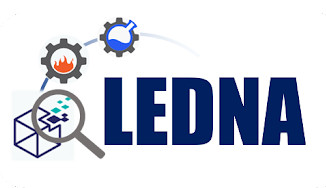Joint Laboratories
Research activities carried out in joint laboratories in response to scientific questions that help to overcome barriers to industrial value-added.
Innovation and technology transfer are strong points of our laboratory, as demonstrated by the research activities of the two joint labcoms (partnership contract between NAWATechnologies and LEDNA, and ANR LabCom contract between LEDNA and LICSEN and Europrotect). These activities are respectively focused on the use of carbon nanostructures (Aligned Carbon Nanotubes – VACNT) for the elaboration of electrode materials for electrochemical storage devices, and the use of sol-gel and graphene formulations and their shaping for the development of innovative technical textiles. These projects are in line with the development of themes that meet major societal demands – clean energies, energy storage, innovative materials, etc. – and enable us to consolidate our relations with industry.
NAWALAB
The NAWALab joint laboratory was created in 2014 with the company NAWATechnologies and the Universities of Tours and CY Cergy Paris Université. The approaches followed are linked to the development of innovative solutions based mainly on the use of carbon nanotube mat-based materials integrating or not other forms of nanostructures/materials for electrochemical energy storage applications (supercapacitors). Through its renewal with a new joint R§D partnership program defined over the period (2020-2025) it aims to increase the level of maturity and performance of the products and support the company towards commercialization, enable the company to move towards innovative solutions and concepts applied to the energy transition field and above all for the laboratory to answer new upstream scientific research questions. For example, we have focused our efforts on maturing some of our approaches by jointly developing the controlled growth of longer aligned CNTs on finer and larger metal collector surfaces, on studies leading to the quantification of VACNT adhesion to electrodes, and on improving the environmental footprint of our VACNT growth process through the use of bio-sourced carbon precursors.
Contact : Mathieu Pinault

Common laboratory on functionnal innovative textiles – LACTIF
With the LACTIF joint laboratory project, the CEA through its joint research unit, NIMBE, an expert in the field of materials, and Europrotect, a company specializing in the technical textiles market, will pool their expertise to respond to these questions. priority requests.
This LabCom has two work axes. The first aims to implement a new technology in the textile sector, compatible with REACH regulations, and to give textiles the property of hydro-oleophobicity to replace perfluorinated polymers. The chosen strategy is the “sol-gel” route. The second line of work concerns the coating of textiles with graphenic objects in order to ensure either a moderate level of thermal conductivity for thermal comfort, or a very high thermal and electrical conductivity for stealth (military). Two processes will be evaluated, one using the liquid route, the other using the gas route.
Contact : Marc Maleval (sol-gel route) and Emeline Charon (Graphene route)





